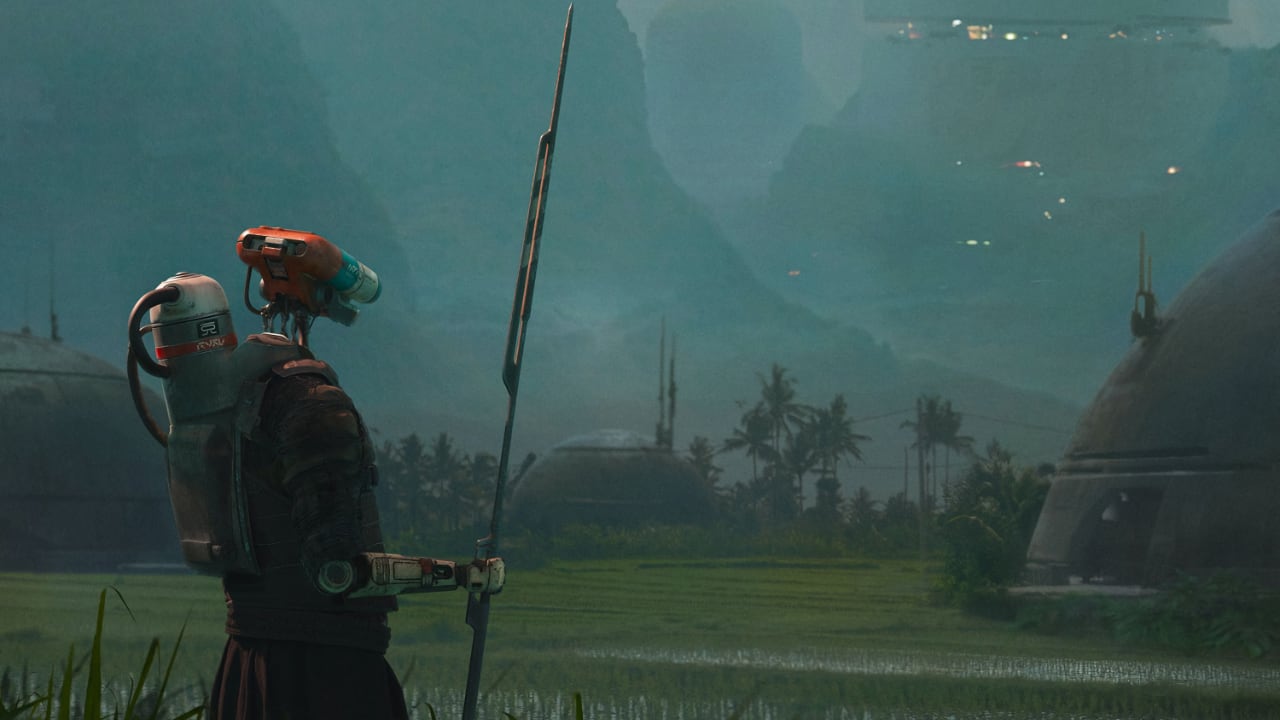
Even though there’s also an IMAX version of the movie doing the rounds, breakout sci-fi hit The Creator was shot on a sub-$4000 Sony FX3.
Over the past decade, Hollywood blockbuster films have become accustomed to using expensive cameras built by ARRI or RED Digital. The budget for the camera’s body alone can account for tens of thousands of dollars. Filmmakers often believe they cannot make successful films without expensive camera equipment. However, the recent release of The Creator could mark a seismic shift within the film industry.
The Creator is a (mostly) action-based science fiction film written and directed by British filmmaker Gareth Edwards (Godzilla & Rogue One: A Star Wars Story), and two cinematographers, Greig Fraser and Oren Soffer. It’s causing a few ripples as well, as it was a wholly original idea not based on any existing IP, was shot for a comparatively low blockbuster budget of $80m, and taps into the current queasiness about the development of AI. If you've not seen it before, have a look at the trailer below: we’re definitely talking about a slightly more nuanced argument than Terminator 2, as well as *a lot* of work in post.
This film marks one of the first instances of a blockbuster IMAX film using a consumer-friendly camera, the Sony FX3, as the A cam during principal photography. This news was first reported prior to the film’s release and later confirmed — despite plenty of initial online scepticism — by Gareth Edwards at a panel during the 2023 San Diego Comic-Con.
So, why the Sony FX3 camera? What were the creative/logistical decisions that led to its use, and how did the team spec the camera package used during principal photography?
What the Sony FX3 brings to the party
The Sony FX3 is a compact mirrorless camera released in early 2021. Sony modelled it on the A7S line of cameras, which it has been releasing since 2013. Sony’s previous release, the A7S III camera, caters to hybrid content creators (YouTubers, wedding photographers, etc.) who want to shoot photos and videos. The FX3, on the other hand, is part of Sony’s cinema line and is built for professional filmmakers.
You can currently pick an FX3 up for $3899, and it is available for purchase at most commercial electronics stores worldwide. This is not a difficult camera to obtain.
Shooting in low light
The FX3’s settings include more than 15 stops of Dynamic Range and an ISO range between 80 and 409,600. This gives the filmmakers a unique ability to shoot high-resolution footage in low-light situations, which was vital during the production of The Creator (more on this below).
Active cooling
An interesting upgrade is the inclusion of a fan-assisted cooling mechanism, which improves the camera’s overall battery life. Filmmakers also can plug in a power source via USB. These features will have a significant impact on the camera’s shooting time. Cinematographers can now go for much longer takes on a much smaller camera without the risk of overheating or losing battery life.
Cinematic shooting
One of the reasons Sony classified the FX3 as part of its cinema line is due to the inclusion of the S-Cinetone, a feature found in all its cinema cameras. Using this color profile allows up-and-coming filmmakers to achieve a cinematic look for a much lower price point.
So, why did The Creator use the FX3?
The decision to use the Sony FX3 is rooted in the logistics of the principal photography. The Creator has a relatively lower budget for a blockbuster at approximately $80 million. Gareth Edwards (who also produced the film) opted to shoot on location with a much smaller crew to stay within the budget. Principal photography spanned over 80 locations across the world, so the crew had to be fluid and travel light. Extensive travelling also meant they could not carry as much equipment, specifically lighting units.
Enter the FX3, which is much smaller and compact compared to traditional cinema cameras. The camera's build and size enable a guerrilla filmmaking style, allowing Edwards to bring the best out of the cast. Additionally, the camera's low-light capabilities allowed them to shoot with limited lighting equipment and still capture cinematic footage at a high resolution.
The camera package
While we are excited about The Creator’s pro-consumer philosophy, it is also important to remember that the camera body represents only a single item in a camera department’s equipment budget.
Digital Cinema Report’s interview with cinematographer Oren Soffer reveals that they “shot 95% of the film on a Kowa Cine Prominar 75mm anamorphic lens” to capture the visual look of classic science fiction films such as Alien and Blade Runner. He also mentions using a DJI Ronin RS2, with custom modifications, as the A cam setup.
In another conversation with the Art of the Frame podcast, Soffer mentions that the production used “prosumer grip equipment to keep the footprint small”. In particular, he highlights the Kessler Shuttle Dolly and Grip Factory Munich GF-Mini Jib for their dolly setups.
He also — and this is perhaps a key point — mentions that they did not shoot the entire film on just one FX3. To support the guerrilla filmmaking style, the production had what Soffer calls a “buffet of cameras”. In fact the camera team used eight FX3 camera bodies for the shoot. Each was pre-built and rigged onto different accessories (such as the gimbal, jib, drone, shoulder mount, etc.) to be used at a moment’s notice.
Final thoughts
The Creator should be an important lesson to filmmakers on the value of optimizing the budget. Instead of spending millions building sets and renting expensive equipment, Edwards invested in the locations, production design, and VFX. Ultimately, this enabled him to create a blockbuster film on a relatively lower budget.
Given the pace of modern technological advancements in the film industry, it is easy to overlook what makes a film great. One of which is capturing authenticity on camera. Aside from being an affordable alternative, the creative team chose the Sony FX3 camera because it facilitated a style of filmmaking that captured authentic performances. All in all, The Creator proves that spending money on a cinema camera is a luxury, not a necessity, to make a visually stunning film.
Tags: Production


Comments